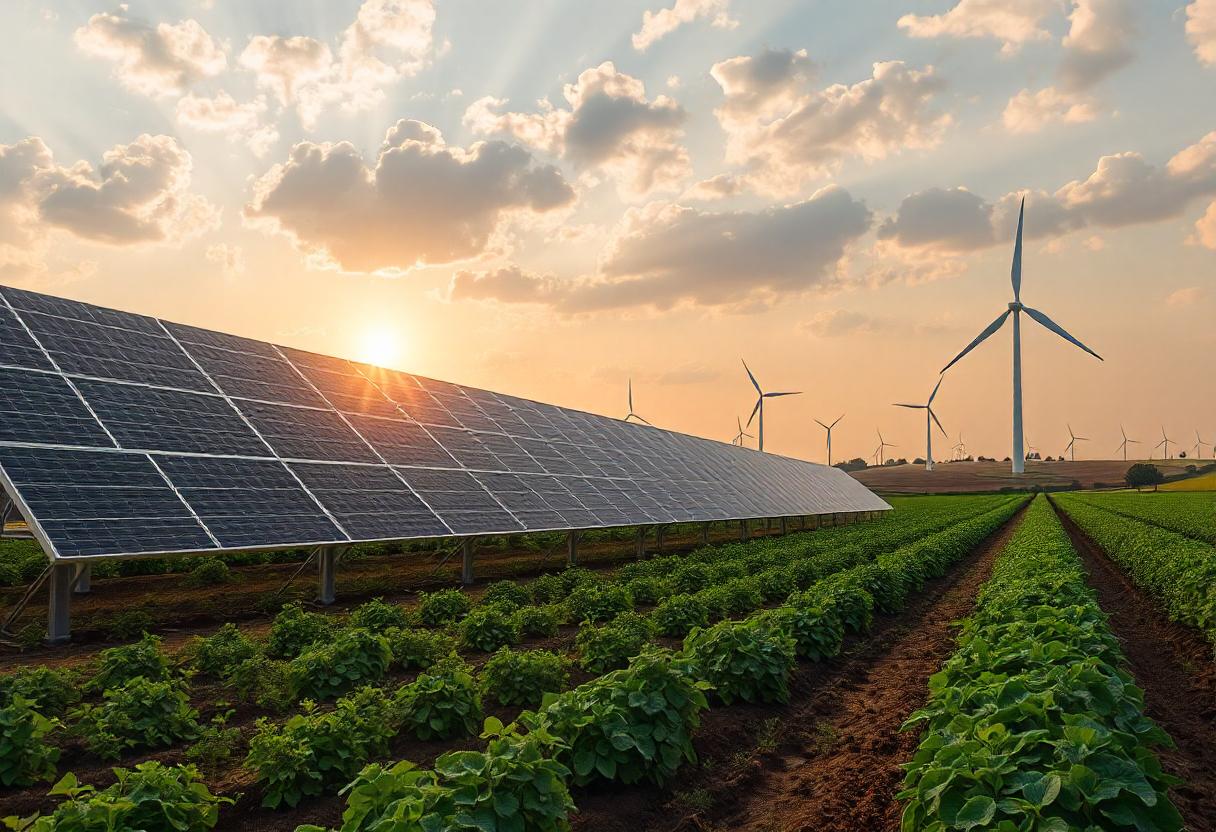
The relationship between agriculture and renewable energy has become increasingly important as farmers and agricultural businesses seek sustainable solutions. Agriculture is one of the largest consumers of energy, primarily for irrigation, production, and transportation. Integrating renewable energy sources like solar and wind can help reduce the environmental impact of agriculture while ensuring energy security.
The Role of Solar Energy in Agriculture
Solar energy is one of the most accessible forms of renewable energy for agricultural use. Solar panels can be installed on farms to generate electricity for various purposes, including powering irrigation systems, machinery, and even processing facilities. Solar water pumps are also becoming popular in remote agricultural areas where access to the electrical grid is limited. These pumps help reduce reliance on traditional fuel sources, thereby lowering greenhouse gas emissions.
Solar energy can also support crop growth in innovative ways. For example, agrivoltaics is the practice of using solar panels alongside crops, where the panels generate electricity while providing shade to plants. This method has been shown to increase crop yields by reducing heat stress on plants.
Wind Energy Applications in Agriculture
Wind energy is another valuable renewable energy source for agriculture. Farms situated in areas with consistent wind patterns can benefit from wind turbines that generate electricity. This electricity can be used to power farming equipment, homes, or even sold back to the grid, providing farmers with an additional income stream.
Small-scale wind turbines are especially useful for off-grid agricultural operations, where access to conventional energy sources may be costly or unreliable. Wind-powered water pumps are also commonly used in rural areas to supply water for livestock and irrigation.
Energy Independence for Farmers
By integrating renewable energy systems such as solar panels and wind turbines, farmers can achieve greater energy independence. This shift reduces dependence on fossil fuels, which are subject to price fluctuations and supply disruptions. As energy prices continue to rise, renewable energy solutions offer a cost-effective alternative for long-term sustainability.
Energy independence also allows farmers to focus more on their agricultural operations without the concern of unstable energy costs affecting their profitability. For example, the energy required for greenhouses, cold storage, and grain drying can be supplied through renewable sources, lowering operational expenses.
Reducing Carbon Footprint in Agriculture
The agriculture sector is a significant contributor to global greenhouse gas emissions, primarily from the use of fossil fuels in machinery, transportation, and fertilizers. Implementing renewable energy solutions can significantly reduce the carbon footprint of farms. For instance, replacing diesel-powered irrigation pumps with solar-powered alternatives can eliminate a substantial amount of carbon emissions.
Wind energy also plays a role in reducing emissions. By producing electricity from wind power rather than coal or natural gas, farms can cut their carbon emissions and contribute to broader environmental sustainability goals.
Challenges in Adopting Renewable Energy in Agriculture
Despite the benefits, there are several challenges that farmers face when adopting renewable energy. The initial costs of installing solar panels or wind turbines can be high, and the payback period can be long, especially for small-scale farmers with limited financial resources.
Moreover, renewable energy systems require maintenance and may not always be reliable, particularly in areas with inconsistent sunlight or wind patterns. However, advancements in storage technology, such as batteries, are making it easier to store excess energy for use during times when renewable sources are not available.
Government Support and Incentives
Many governments offer incentives and subsidies to encourage the adoption of renewable energy in agriculture. These include grants, tax credits, and low-interest loans for the installation of solar and wind systems on farms. In some regions, farmers can also benefit from feed-in tariffs, which allow them to sell excess electricity generated by renewable sources back to the grid at favorable rates.
Such policies help reduce the financial burden of transitioning to renewable energy and make it more accessible for farmers of all sizes.